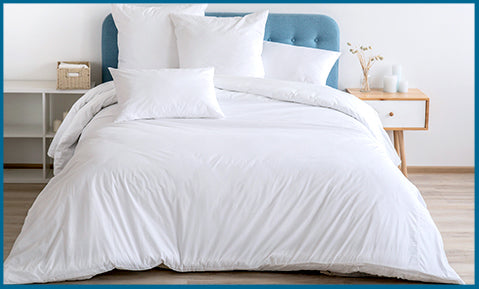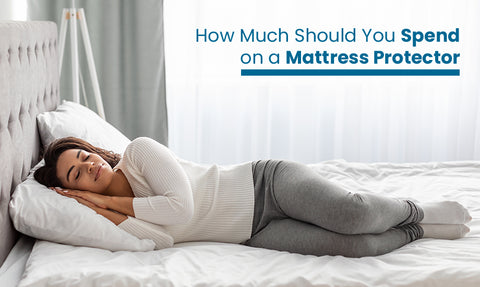
About 1 billion people are estimated to have obstructive sleep apnea worldwide among which 400 million suffer from severe to moderate symptoms. Adults are more prone to it than children. But before going into further detail, let’s understand what Obstructive Sleep Apnea is!
Definition- Obstructive sleep apnea is the most common sleeping disorder characterized by recurrent or repeated episodes of obstruction while sleeping. It occurs due to blockage of the upper airway. It often results in disruption of sleep along with the increased frequency of daytime fatigue and sleepiness, thereby, decreasing the quality of life. It is the most common type of sleep-related breathing disorder. Obstructive Sleep Apnea is more prevalent in men than in women. It is higher in patients with obesity, hypertension, and other cardiac problem. But most commonly the prevalence increases with age.
What is the pathophysiology of Obstructive Sleep Apnea?

OSA is a multifactorial and complex entity. Usually, air travels to our lungs via the nose or mouth helping us breathe while we sleep. But in OSA, a person cannot breathe due to the relaxation of muscles at the back of the throat causing the blockage. Snoring is evident in such people. In a simplified way, it is safe to say that the upper airway collapses due to decreased pharyngeal muscle activity. The episodes are usually accompanied by reduced oxygen and increased carbon dioxide in the body due to microarousal which occurs as a result of the respiratory effort to restore breathing.
As we know how sleep apnea works, etiology lies in the name itself- Obstruction. The obstruction in airway but what possibly can affect your breathing during sleep?
- Obesity
- Lung disease like asthma, COPD
- Endocrine disorders like acromegaly and polycystic ovary syndrome
- Neuromuscular condition that can interfere with brain signals
- In pregnancy
What are the symptoms of Obstructive Sleep Apnea?

Usually the symptoms are not recognized by the patient first but by their bed partner. Snoring is the first sign of OSA along with daytime drowsiness and fatigue. The patient often complains of:- Morning headaches
- Loss of focus and concentration
- Mood change
- Decreased libido
- Depression
- Awakening with dry mouth
- Frequent urination
- Hyperactivity, bedwetting, night sweats in children
- Insomnia
- Sudden awakening due to gasping or choking
All these signs and symptoms not only affect the physical but mental and social health too. Due to lack of concentration and drowsiness in morning, a person is not able to work or study properly. Moreover, a person is considered as lazy or lethargic at his job which affects the person’s mental state often causing depression. Even though snoring is the first sign of OSA but not all who snore have Obstructive Sleep Apnea.
How is the condition diagnosed?
The condition must diagnose to evaluate the severity and plan the management accordingly. Any diagnosis is incomplete without complete medical history and physical examination. So first the signs and symptoms are evaluated followed by complete history to rule out any kind of genetic entity. Various tests are performed along with sleep evaluation which is usually done by sleep specialists.
- Physical Examination: It includes examination of throat, nose, mouth, neck and back of your head for any abnormality or tissue growth.
- Polysomnography: It is considered as gold standard test for diagnosing OSA. In the test, the person’s brain activity is monitored while asleep in laboratory or hospitals along with eye movement, breathing pattern, muscle activity, heart rate and oxygen levels in the body. Then the severity of the condition is graded. It might confirm the apnea but not the location of the obstruction.
- Nasopharyngoscopy: It is a procedure in which endoscopy is introduced through nose to study the anatomical structures that causes obstruction of the airway.
- Sleep Endoscopy: It is similar to nasopharyngoscopy except it is done under sedation and to replicate the same condition to observe the state and structures involved.
- Home Sleep Test: It is an alternate to polysomnography which is done at comfort of home. But it records fewer functions than polysomnography.
How is the Condition treated?
The condition can be treated by various therapies, surgeries and other conventional method.
Therapies
- Continuous Positive Air Pressure (CPAP): Positive air pressure is one of the important therapies used to treat Obstructive Sleep Apnea. In this mechanical device are used to deliver air through nose while you sleep, thereby, preventing any respiratory distress or events. CPAP is the type in which flow of air is consistent and continuous, and the pressure is greater than that of surrounding preventing snoring and apnea. It is set at single pressure. Although the machines and masks might be cumbersome for the patient but with practice it becomes easy to wear these masks. Moreover, other options are available like night pillows, comfortable nasal and face masks.
- Bilevel Positive Air Pressure (BPAP): In this positive air pressure, the pressure exerted is different while exhalation and inhalation. The machine is sometimes referred to as BiPAP machines as it delivers two pressures.
- Devices
Alternate to Pressure therapies, oral devices are used to keep your throat open during sleep preventing any kind of obstruction.
- Mandibular advancement device- It is a dental device that is used in mild to moderate cases. It is designed such that it prevents the tongue from blocking throat and advances your lower jaw.
- Hypoglossal Nerve stimulator- It is placed under the skin on right side of chest. It stimulates the hypoglossal (cranial nerve) with every breath that moves the tongue preventing any kind of blockage.
- Surgery
Surgeries are only considered if all other therapies have failed or aren’t an appropriate choice for the patient. It is done in cases when a person has excessive tissue, malformed tissue, deviated nasal septum, enlarged tonsils or any other abnormality narrowing throat or the air passage. Following surgeries are performed:-
- Uvulopalatopharyngoplasty- It involves removal of soft tissue from back of the throat and mouth to increase the air passage.
- Somnoplasty- It is a minimal invasive procedure that reduces the soft tissue at back of throat with the help of radio frequency.
- Nasal Surgery- It is done in case of nasal abnormalities.
- Mandibular Surgery- It is preferred in severe cases as it is an invasive procedure. It includes correction of any defect in lower jaw that is obstructing the pathway.
- Tracheostomy- It is performed in life-threatening a situation that occurs due to obstructive sleep apnea.
- Other Conservative treatment
Other conservative methods involve:
- Losing weight is beneficial as it reduces the risk of apnea.
- Avoid smoking, alcohol and sleeping pills as airway tend to collapse frequently because of the pills.
- Sleep on your side and avoid sleeping on your backs
- Change your lifestyle and resort to more healthy diet and life.
- In case of colds or nasal blocks, use nasal decongestants.
After a hectic workday all we look for is few quiet moments of sleep and if somehow our lifestyle is not allowing us the benefit of it, we are doing something wrong. OSA is preventable and manageable. So you should neither delay the treatment nor the comfort of your sleep.












